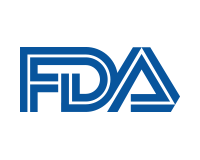United States Department of Health and Human Services

United States Food and Drug Administration: Publications
Date of this Version
2017
Document Type
Article
Citation
Pharmacoepidemiology and Drug Safety 2017; 26: 592–596, DOI: 10.1002/pds.4185.
Abstract
Purpose To examine ondansetron use in pregnancy in the context of other antiemetic use among a large insured United States population of women delivering live births.
Methods We assessed ondansetron and other antiemetic use among pregnant women delivering live births between 2001 and 2015 in 15 data partners contributing data to the Mini-Sentinel Distributed Database. We identified live birth pregnancies using a validated algorithm, and all forms of ondansetron and other available antiemetics were identified using National Drug Codes or procedure codes. We assessed the prevalence of antiemetic use by trimester, calendar year, and formulation.
Results In over 2.3 million pregnancies, the prevalence of ondansetron, promethazine, metoclopramide, or doxylamine/pyridoxine use anytime in pregnancy was 15.2, 10.3, 4.0, and 0.4%, respectively. Ondansetron use increased from <1% of pregnancies in 2001 to 22.2% in 2014, with much of the increase attributable to oral ondansetron beginning in 2006. Promethazine and metoclopramide use increased modestly between 2001 (13.8%, 3.2%) and 2006 (16.0%, 6.0%) but decreased annually through 2014 (8.0%, 3.2%). Doxylamine/pyridoxine, approved for management of nausea and vomiting in pregnancy in 2013, was used in 1.8% of pregnancies in 2014. For all antiemetics, use was highest in the first trimester.
Conclusions We observed a marked increase in ondansetron use by study year, prescribed to nearly one-quarter of insured pregnant women in 2014, occurring in conjunction with decreased use of promethazine and metoclopramide. Given the widespread use of ondansetron in pregnancy, data establishing product efficacy and methodologically rigorous evaluation of post-marketing safety are needed.
Included in
Dietetics and Clinical Nutrition Commons, Health and Medical Administration Commons, Health Services Administration Commons, Pharmaceutical Preparations Commons, Pharmacy Administration, Policy and Regulation Commons


Comments
U.S. government work.